Picture yourself walking through a gritty urban landscape, where the stark lines of steel and concrete inspire a fashion movement that marries form and function. You'll find that industrial fashion isn't just about rugged materials or oversized silhouettes; it's a statement about practicality and individuality. As you explore its roots and key elements, you'll discover how this style has evolved and what it means for contemporary wardrobes. What might surprise you is the unexpected direction this aesthetic is heading in and how it challenges traditional notions of fashion.
Origins of Industrial Fashion
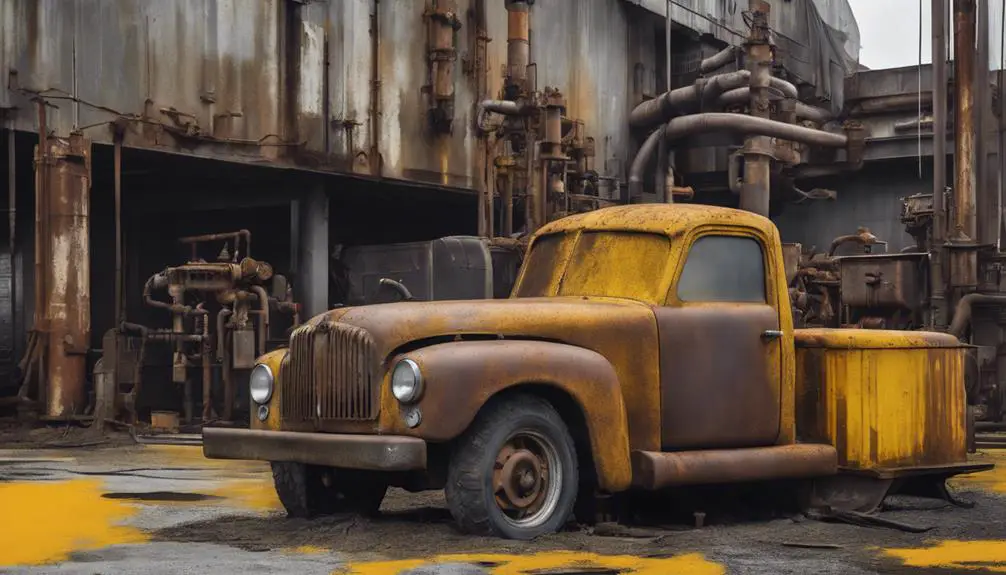
Industrial fashion finds its roots in the transformative period of the Industrial Revolution, where manufacturing processes and societal aesthetics underwent a significant shift. Imagine bustling factories, the sound of machines whirring, and cities filling up with people seeking work. This era changed everything, especially what people wore. With urbanization on the rise, folks needed practical, utilitarian clothing that could handle the daily grind. Who wants to be worried about their outfit while working in a factory, right?
As factories flourished, they brought about a new focus on functional clothing. No more frilly dresses or tight suits—design aesthetics began to embrace ruggedness and durability. Instead, clothing became about being efficient and comfortable, perfect for a life filled with hard work. You could even say that industrial fashion was like a badge of honor, showing off the raw beauty of the hardworking world.
Fast forward to the late 20th century, and you'll see industrial fashion making waves again. Designers and fashion icons started to recognize its edgy, unique aesthetic. This evolution reflects the origins of industrial fashion, blending practicality with a bit of flair. It's fascinating how something born from necessity transformed into a style statement we admire today!
Key Elements of Industrial Fashion
The evolution of industrial fashion brings us to its defining characteristics, which reflect both its practical roots and modern interpretations. You'll notice that the key elements of this style lean heavily on materials like metal, leather, and denim. These choices shout ruggedness and durability, perfect for those who want to combine style with functionality. Vintage pieces can add unique flair, much like how identifying vintage Ralph Lauren can enhance your wardrobe with timeless elegance.
When you think about industrial fashion, oversized jackets are a must-have. They provide that comfy, laid-back vibe while still looking sharp. Tailored trousers are another essential piece, offering a sleek silhouette that balances out the bulkiness of those jackets. Imagine stepping out in chunky boots—talk about making a statement!
Now, let's talk colors. The palette is mostly neutral tones like black, gray, and brown. This creates an understated yet sophisticated look that's easy to mix and match. You'll also find that the silhouettes are all about structured shapes. They mirror the angular lines you see in industrial architecture, making your outfit feel bold and confident.
Accessories can't be overlooked, either! Think chains, rivets, and exposed zippers. These edgy details elevate your outfit and add a touch of personality. So, whether you're dressing for a casual day out or a night on the town, embracing these key elements of industrial fashion will guarantee you're stylish and ready for anything. Why not give it a try? You might just love it!
Incorporating Industrial Fashion
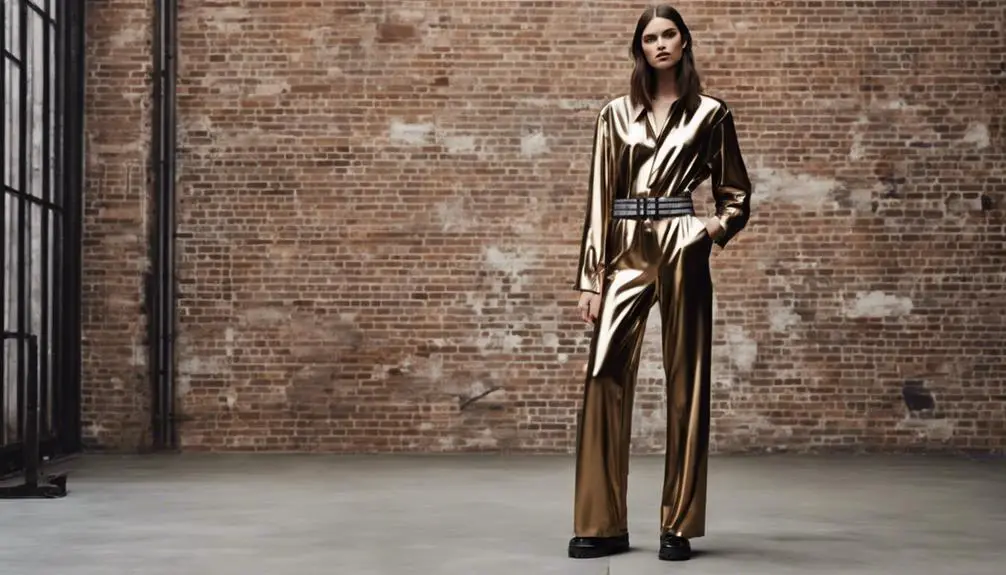
Embracing industrial fashion in your wardrobe starts with key foundational pieces that capture its rugged aesthetic. You can't go wrong with a leather jacket and some distressed denim. These staples scream practicality and comfort while giving you that cool, edgy vibe. To enhance your look even further, consider incorporating vintage Nike pieces, as their quality and design from the 70s and 80s can add a unique touch to your outfit, reflecting Nike's brand history. But let's not stop there! Mix textures to keep things interesting. Try pairing your denim with leather, or throw on a silk top under an oversized jacket to add depth to your look.
When it comes to colors, stick to neutral shades like blacks, grays, and browns. These colors not only maintain simplicity but also reflect the industrial themes beautifully. Plus, they make it super easy to mix and match your outfits!
Now, let's talk about industrial-inspired accessories. Think chains, rivets, and exposed zippers. These little details can really enhance your outfit and add that edgy flair you're going for. And remember, minimalism is key. Opt for clean silhouettes that highlight those industrial elements without drowning them in excessive embellishments.
Essential Industrial Chic Characteristics
Fashion enthusiasts appreciate the essential characteristics of industrial chic, which merge comfort with an edgy aesthetic. This style is all about utilitarian silhouettes, like oversized jackets, cargo pants, and jumpsuits. You'll love how these pieces emphasize both comfort and functionality, making you feel at ease while looking effortlessly cool. To enhance the fit of your oversized jackets, consider assessing jacket fit to guarantee it complements your overall look.
Now, let's talk materials. Industrial chic fashion prominently features raw materials such as denim, leather, and distressed fabrics. These elements bring a rugged flair to your wardrobe, while metal hardware adds a touch of toughness. Think exposed zippers and rivets—aren't those edgy details just striking? They perfectly balance the ruggedness of workwear with a sense of high-end elegance.
Another key aspect is the neutral color palette, dominated by shades of black, gray, brown, and khaki. This simplicity adds sophistication to your look. You can mix and match with ease, making getting dressed a breeze! The overall vibe of industrial chic fashion reflects a blend of practicality and refinement, appealing to modern consumers like you who value style and functionality.
Workwear Style and Its Evolution

Workwear style has come a long way since its origins in the early 20th century, when it was purely about practicality for factory workers. Back then, practical clothing was all about getting the job done. But guess what? It's evolved into a fashion trend that's stylish and versatile! Today, workwear is all about relaxed fits and durable fabrics, like cotton twill and denim, making it perfect for both work and play. Vintage clothing enthusiasts often seek out classic popular vintage categories that include essential workwear pieces, blending function with fashion.
You can't talk about workwear without mentioning essential pieces like chore jackets, cargo pants, and work shirts. These items balance functionality with modern aesthetics, allowing you to look good while still being ready for anything. How cool is that? The shift in workwear's popularity during the '90s, embraced by artists and skateboarders, shows just how adaptable this style is.
Seasonal considerations are key too. You can use layering techniques to guarantee that your workwear remains stylish and practical, no matter the climate. Imagine rocking a chore jacket over a comfy work shirt, paired with cargo pants. Not only do you look great, but you're also comfortable and ready for anything the day throws at you.
Future Trends in Industrial Fashion
The future of industrial fashion is shaping up to be exciting and innovative, driven by a strong demand for sustainability and ethical practices. You can expect to see more sustainable practices popping up everywhere, as brands embrace eco-friendly materials and ethical production methods. This shift isn't just good for the planet; it's what consumers want!
Technology is also stepping into the spotlight. Smart textiles are on the rise, blending functionality with style. Imagine clothes that not only look great but also adapt to your needs, keeping you comfy and connected.
And let's talk about gender-neutral styles! These versatile, utilitarian silhouettes are gaining traction, promoting inclusivity and breaking traditional gender norms. You'll find clothing that looks amazing on everyone, making it easier to express yourself.
With urbanization shaping our lifestyles, industrial fashion is evolving to include adaptable pieces. Whether you're hitting the city streets or exploring the great outdoors, these designs have you covered.
Oh, and collaborations between high fashion designers and streetwear brands are becoming a thing! This fusion of industrial elements and cutting-edge design is redefining luxury and making fashion more accessible.
Frequently Asked Questions
How Can I Create My Own Industrial Fashion Collection?
To create your own collection, start with fabric sourcing and silhouette exploration. Define your color palette, consider sustainability practices, identify your target audience, develop a branding strategy, and explore collaboration opportunities through trend forecasting and effective marketing channels.
What Are the Best Materials for Industrial Fashion Pieces?
For your industrial fashion pieces, focus on sustainable textiles and bold textures. Incorporate metallic accents and utilitarian silhouettes, while layering garments with oversized fits. Functional accessories and monochromatic palettes with unexpected combinations will elevate your collection.
Where Can I Find Inspiration for Industrial Fashion Designs?
You can find inspiration for industrial fashion designs in factory aesthetics, urban decay, and vintage machinery. Explore architectural silhouettes, mechanical elements, innovative textiles, and color palettes, while considering sustainable practices and futuristic accessories for unique, utilitarian designs.
How Do I Style Industrial Fashion for Everyday Wear?
Imagine a cityscape at dusk, where layered looks blend with bold accessories. You can mix fabric textures and color combinations for casual outfits. Choose statement pieces and trendy footwear to nail that minimalist street style effortlessly.
What Are the Key Brands in the Industrial Fashion Market?
You'll find key brands in industrial fashion focusing on streetwear influence and sustainable practices. Look for emerging designers, brand collaborations, and iconic collections that highlight fashion technology and industrial aesthetics, reflecting current market trends and consumer demographics.
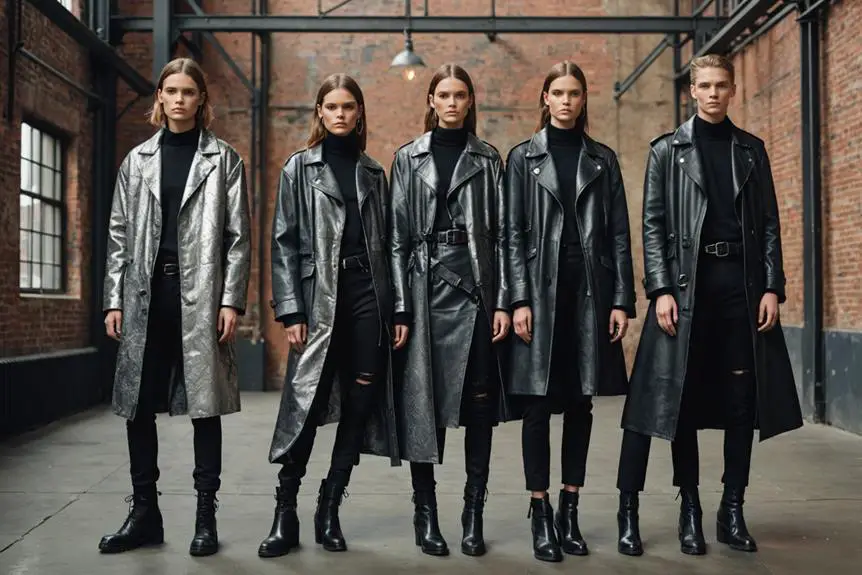

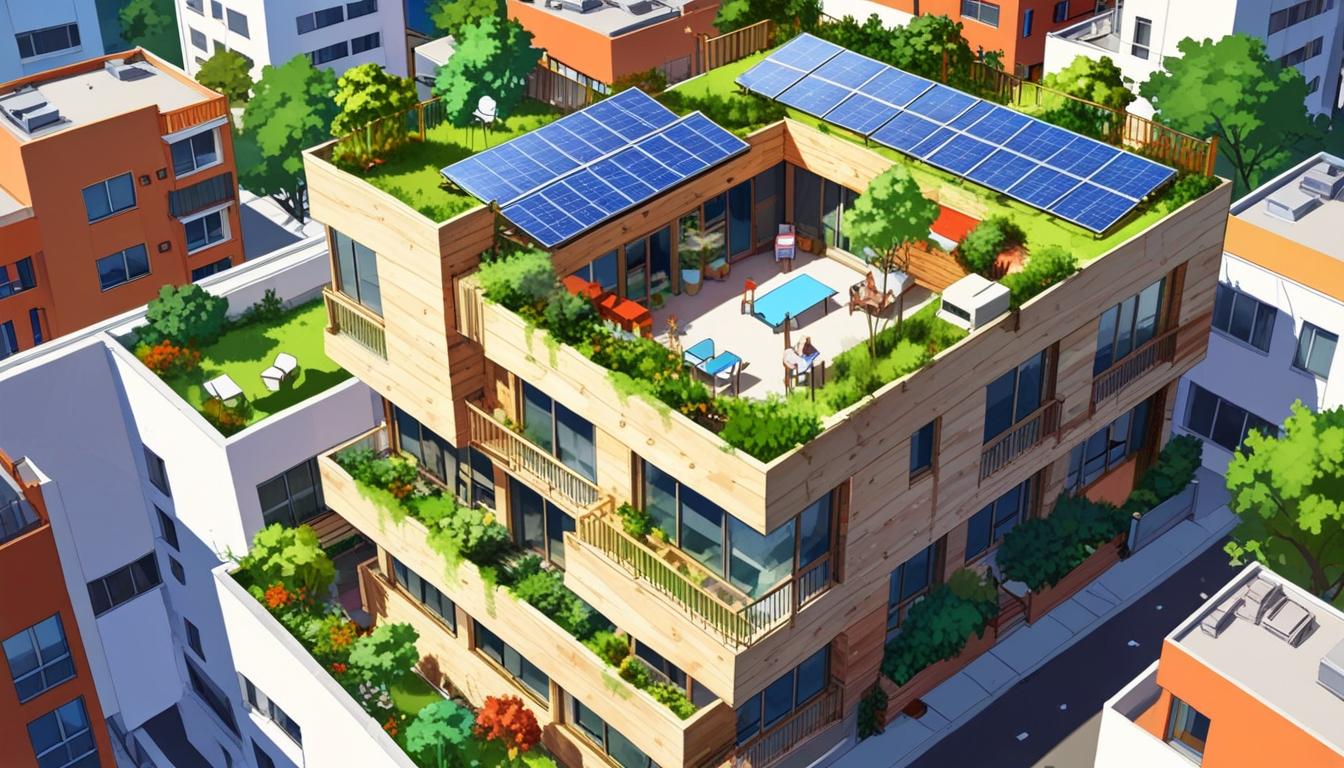
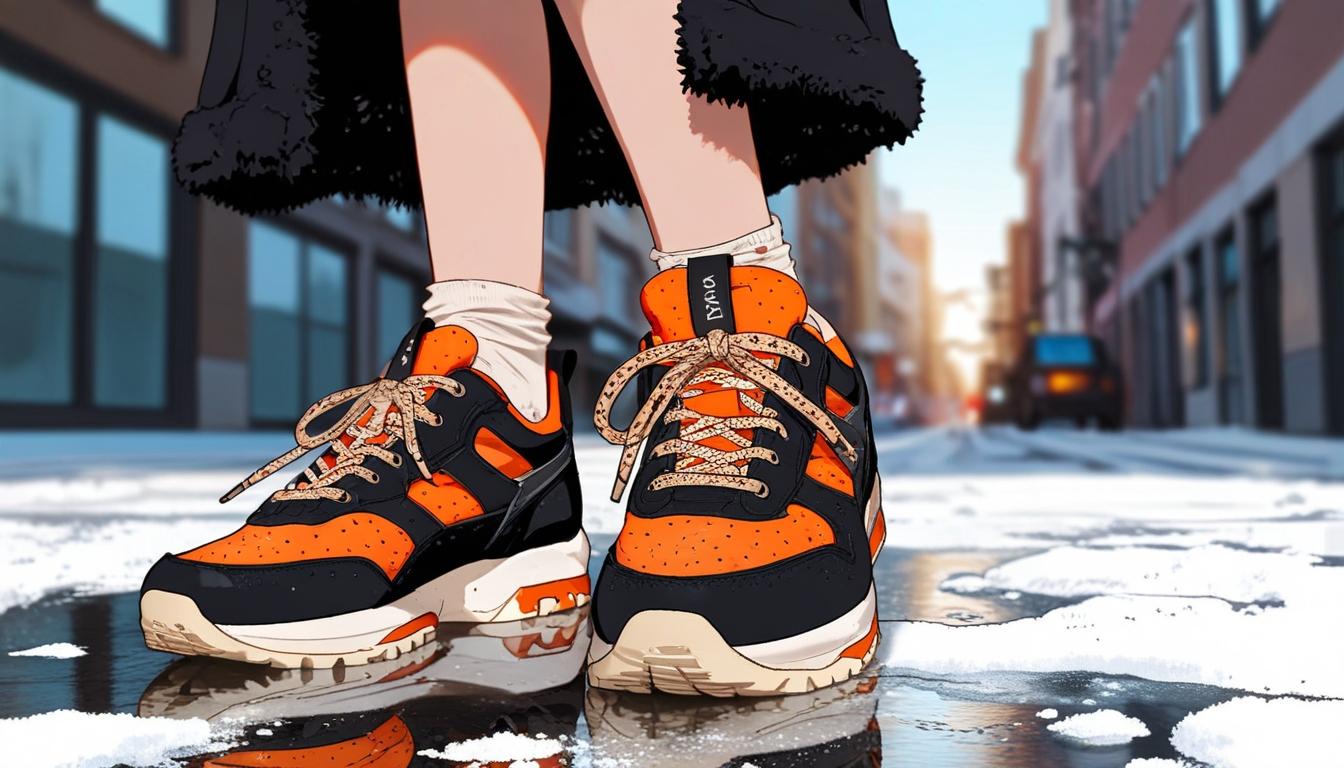
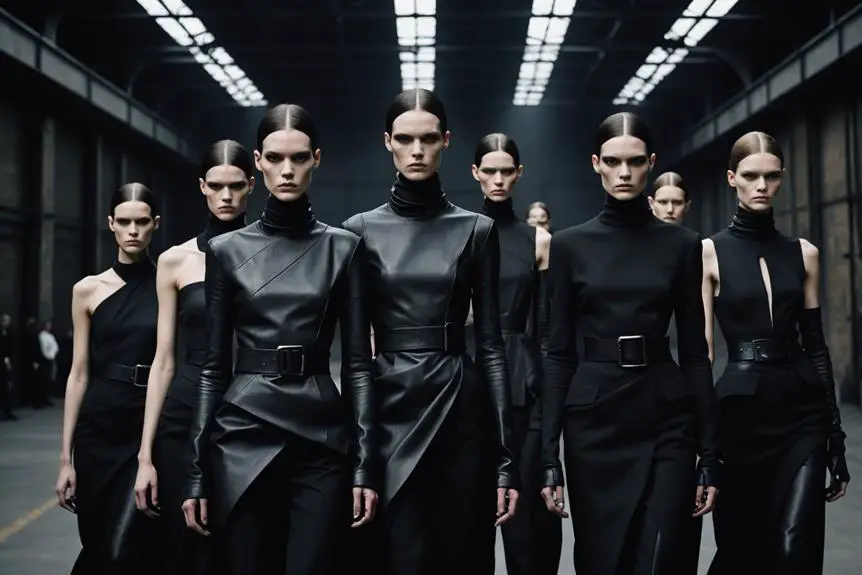
Immerse into the breathtaking galaxy of EVE Online. Shape your destiny today. Trade alongside hundreds of thousands of explorers worldwide. [url=https://www.eveonline.com/signup?invc=46758c20-63e3-4816-aa0e-f91cff26ade4]Download free[/url]